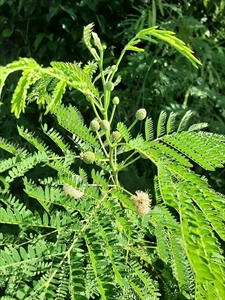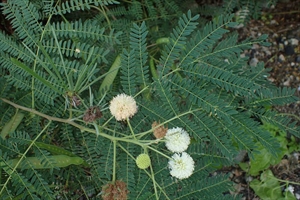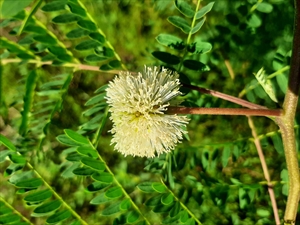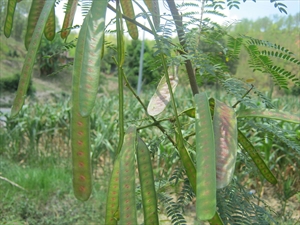- Worldwide distribution. In Australia and 22 Pacific island countries.
- Note, a subspecies, leucocephala, used for fodder, fuel, green manure, is the problem. Aggressive, invasive weed especially in dry disturbed areas on calcareous soils. Weed of pastures, open woodlands, parks, gardens, wastelands, along roadsides, riverbanks, coasts. Flowers/fruits early and abundant, hard seed, forming large seed banks germinating over time, spreads easily, fire tolerant. Problem in Tonga and Vanuatu forming dense thickets, preventing access by animals, and negatively impacting biodiversity.
- Shrub or tree up to 10m. Leaves alternative, divided into leaflets (4-9 pairs), divided again (up to 12 pairs). Flowers, round white/cream clusters on stalks up to 6cm, forming long seed pods each with about 20 seeds. Long tap root.
- Spread: seed, dispersed by rodents, birds, cattle, machinery, vehicles.
- Biosecurity: Among IUCN 100 World's Worst Invasive Species. Seeds available on Internet.
- Biocontrol: bruchid beetle, Acanthoscelides macrophthalmus, released South Africa, and accidently in Australia.
- Cultural control: hand-pulling or slashing (remove taproot, preventing regrowth). Use cattle or goats to graze trees. Clean machinery/vehicles.
- Chemical control: in Australia, triclopyr + picloram; and triclopyr + picloram + aminopyralid. Spray or cut-stump applications. 2,4-D in diesel for basal-bark treatment.











